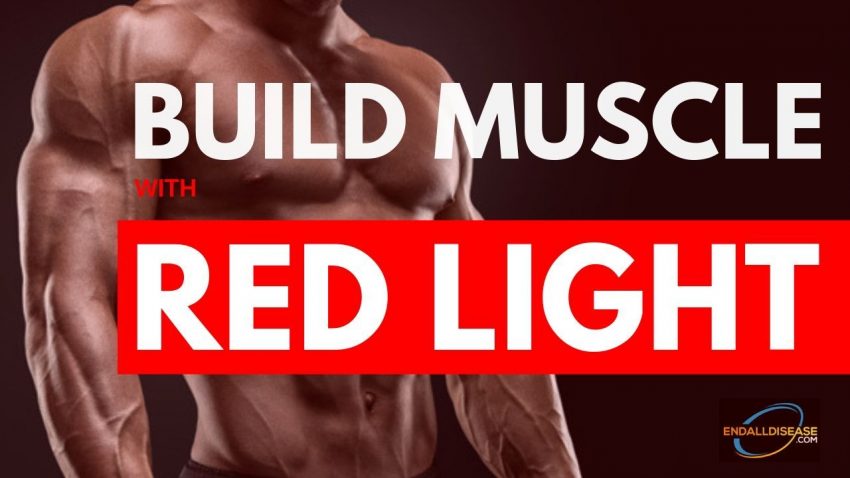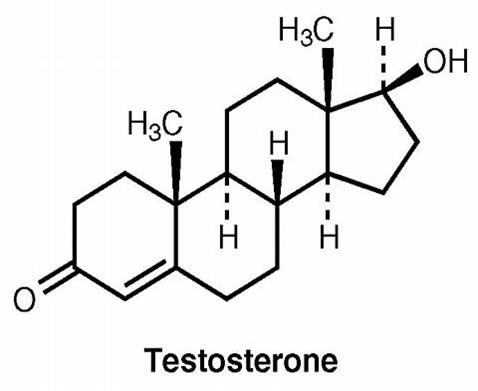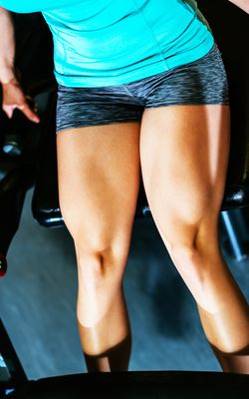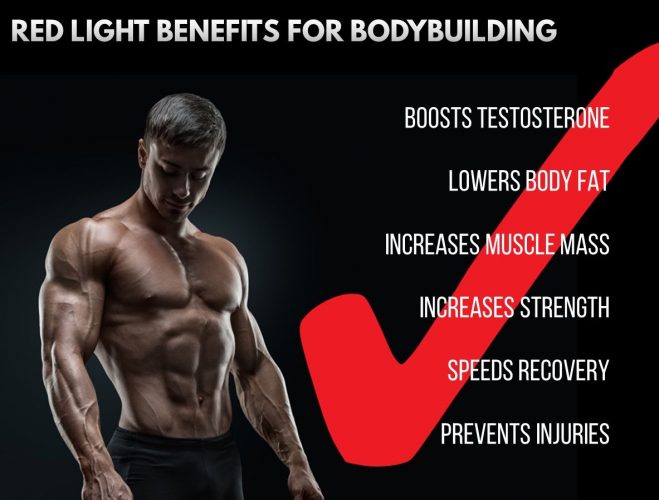How to Build Muscle with Red Light Therapy

If you want to pack on 10 to 20 pounds of muscle but don’t want to have to go through the trouble or pain of injecting yourself with testosterone and other anabolic steroids, then this presentation is for you.
This presentation is also for you if you’re a professional bodybuilder who is looking for a secret weapon that will help you build muscle and give you the edge over your competition.
We’ve already seen the remarkable muscle performance enhancement that red light therapy can give you (endalldisease.com/episode14) but what about muscle growth? Can red light really help you build more muscle?
In this presentation we’re going to find out if red light therapy can help you build bigger muscles and the body you want – whether it’s to help you win that upcoming bodybuilding competition or to boost your confidence and overall health.
(Click here to watch on YouTube)
TABLE OF CONTENTS
Can Red Light Therapy Boost Testosterone?
Rat study
A 2013 Korean study by scientists from Dankook University and Wallace Memorial Baptist Hospital tested light therapy on the serum testosterone levels of rats.

30 rats aged six weeks were administered either red or near-infrared light for one 30 minute treatment, everyday for 5 days.
“Serum T level was significantly elevated in the 670nm wavelength group on day 4.”
“Thus the LLLT using a 670-nm diode laser was effective in increasing serum T level without causing any visible histopathological side effects.
“In conclusion, the LLLT might be an alternative treatment modality to the conventional types of testosterone replacement therapy.”[1]
Human study
Russian scientists tested the effects of light therapy on human fertility in couples having trouble conceiving.

The study tested the magnetolaser on 188 males diagnosed with infertility and chronic prostatitis in 2003.
Magnetolaser therapy is red or near-infrared laser administered inside a magnetic field.
The treatment was found to “elevate the level of serum sexual and gonadotropic hormones,” and remarkably, one year later pregnancy occurred in around 50% of the couples.[2]
Can Red Light Therapy Melt Body Fat?
Brazilian scientists from the Federal University of São Paulo tested the effects of light therapy (808nm) on 64 obese women in 2015.
Group 1: Exercise (aerobic & resistance) training + phototherapy
Group 2: Exercise (aerobic & resistance) training + no phototherapy.
The study took place over a 20 week period during which exercise training was performed 3-times per week. Light therapy was administered at the end of each training session.

Remarkably, the women who received the near-infrared light therapy following exercise doubled the amount of fat loss compared to exercise alone.
Additionally, the women in the exercise + phototherapy group were reported to have a greater increase in skeletal muscle mass than the placebo group.[3]
Can Red Light Therapy Build Muscle Bulk?
In 2015, Brazilian researchers wanted to find out if light therapy could build muscle and enhance strength in 30 male athletes. The study compared one group of men who used light therapy + exercise with a group that did exercise only and a control group.

The exercise program was 8-weeks of knee extensor training.
Wavelength: 810nm Dose: 240J
The men that received light therapy before training “reached significantly higher percent changes” compared to the exercise only group “for sum of muscles’ thicknesses, isometric peak torque and eccentric peak torque.”
In fact, the muscle thickness and strength increases were more than 50% greater for those who used light therapy before exercise.[4]
Can Red Light Therapy Enhance Muscle Strength?
Australian and Brazilian scientists investigated the
effects of light therapy on exercise muscle fatigue in 18 young women.
Wavelength: 904nm Dose:
130J
Light therapy was administered before exercise, and the exercise consisted of one set of 60 concentric quadricep contractions.
Women who received laser therapy before exercise had “significantly reduced muscle fatigue” and “reduced ratings of perceived exertion.”

The light therapy “increased peak torque, time to peak torque, total work, average power, and average peak torque.”
The study concluded that light therapy “was effective in reducing fatigue levels and increasing muscle performance” in young women. [5]
Can Red Light Therapy Accelerate Muscle Recovery?
In a 2015 review, researchers analyzed trials that used red and near-infrared light on muscles before exercise and found the time until exhaustion and the number of reps performed following light therapy increased significantly.
“The time until exhaustion increased significantly compared to placebo by 4.12 s and the number of repetitions increased by 5.47 after phototherapy.”
“We conclude that phototherapy (with lasers and LEDs) improves muscular performance and accelerate recovery mainly when applied before exercise.”[6]
Can Red Light Therapy Accelerate Healing of Injuries?
A 2014 review looked at 17 studies on the effects of red light therapy on skeletal muscle repair for the treatment of muscle injuries.
“The main effects of LLLT were a reduction in the inflammatory process, the modulation of growth factors and myogenic regulatory factors, and increased angiogenesis.”

The studies analyzed demonstrate the positive effects of red light on the muscle repair process.
“The findings suggest that LLLT is an excellent therapeutic resource for the treatment of skeletal muscle injuries.”[7]
Can Red Light Therapy Enhance Muscle Mass and Performance?
A 2016 review and meta analysis by Brazilian researchers looked at all existing studies on the ability of light therapy to increase muscle performance and overall exercise capacity. Sixteen studies involving 297 participants were included.
Exercise capacity parameters included number of repetitions, time to exhaustion, blood lactate concentration and lactate dehydrogenase activity.
Muscle performance parameters included torque, power and strength.
The study found that when laser therapy was applied, lactate levels were reduced, peak torque increased, number of reps increased by 3.51, and time to exhaustion increased by 4.01s.[8]
Can Red Light Therapy Build Muscle Mass?
US and Brazilian researchers worked together on a 2016 review which included 46 studies on the use of light therapy for sports performance in athletes.

One of the researchers was Dr. Michael Hamblin from Harvard University who has been researching red light for decades.
The study concluded that red and near-infrared light therapies can increase muscle mass and decrease inflammation and oxidative stress.
“We raise the question of whether PBM should be permitted in athletic competition by international regulatory authorities.”[9]
Summary
It’s clear from the research that red light therapy is one of the most powerful and safest modalities to improve overall muscle performance and to build muscle. Everything a bodybuilder or a person looking to improve their body’s look and performance red light therapy provides. Benefits include:
- Increased testosterone
- Lower body fat
- Increased muscle mass
- Increased strength
- Accelerated recovery
- Injury prevention

If you’re involved in any kind of sport or physical activity and you’re serious about it, red light therapy is your key to getting the edge over your competition and achieving your goals. What are you waiting for?
To check out our exclusive line of red light therapy devices, check out our store.
If you liked this article please leave a comment below I’d love to hear your thoughts. Thanks for reading.
References
- The effects of low level laser therapy (LLLT) on the testis in elevating serum testosterone level in rats.
http://www.alliedacademies.org/articles/the-effects-of-low-level-laser-therapy-lllt-on-the-testis-in-elevatingserum-testosterone-level-in-rats.html - Iurshin VV, Sergienko NF, Illarionov VE. [Etiopathogenetic basis for using magnetolaser therapy in the complex treatment of male infertility]. Urologiia. 2003;(2):23-5.
https://www.ncbi.nlm.nih.gov/pubmed/12811920 - Sene-fiorese M, Duarte FO, De aquino junior AE, et al. The potential of phototherapy to reduce body fat, insulin resistance and “metabolic inflexibility” related to obesity in women undergoing weight loss treatment. Lasers Surg Med. 2015;47(8):634-42.
https://www.ncbi.nlm.nih.gov/pubmed/26220050 - Baroni BM, Rodrigues R, Freire BB, Franke Rde A, Geremia JM, Vaz MA. Effect of low-level laser therapy on muscle adaptation to knee extensor eccentric training. Eur J Appl Physiol. 2015;115(3):639-47.
https://www.ncbi.nlm.nih.gov/pubmed/25417170 - Toma RL, Oliveira MX, Renno ACM, Laakso EL. Photobiomodulation (PBM) therapy at 904 nm mitigates effects of exercise-induced skeletal muscle fatigue in young women. Lasers Med Sci. 2018;33(6):1197-1205.
https://www.ncbi.nlm.nih.gov/pubmed/29455305 - Leal-junior EC, Vanin AA, Miranda EF, De carvalho Pde T, Dal corso S, Bjordal JM. effect of phototherapy (low-level laser therapy and light-emitting diode therapy) on exercise performance and markers of exercise recovery: a systematic review with meta-analysis. Lasers Med Sci. 2015;30(2):925-39.
https://www.ncbi.nlm.nih.gov/pubmed/24249354 - Alves AN, Fernandes KP, Deana AM, Bussadori SK, Mesquita-ferrari RA. Effects of low-level laser therapy on skeletal muscle repair: a systematic review. Am J Phys Med Rehabil. 2014;93(12):1073-85.
https://www.ncbi.nlm.nih.gov/pubmed/25122099 - Nampo FK, Cavalheri V, Dos santos soares F, De paula ramos S, Camargo EA. Low-level phototherapy to improve exercise capacity and muscle performance: a systematic review and meta-analysis. Lasers Med Sci. 2016;31(9):1957-1970.
https://www.ncbi.nlm.nih.gov/pubmed/27272746 - Ferraresi C, Huang YY, Hamblin MR. Photobiomodulation in human muscle tissue: an advantage in sports performance?. J Biophotonics. 2016;9(11-12):1273-1299.
https://www.ncbi.nlm.nih.gov/pubmed/27874264

